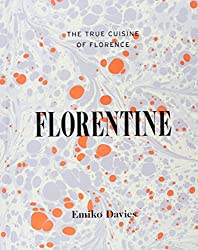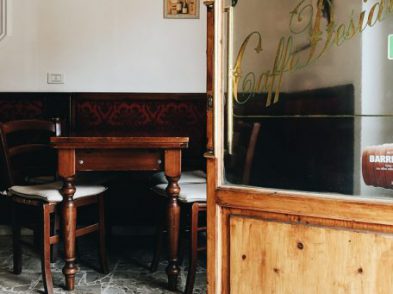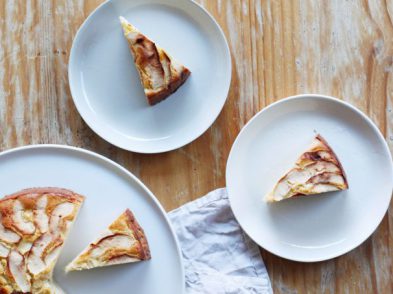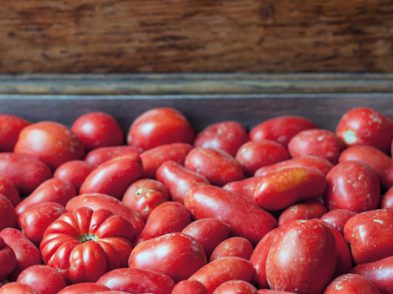November is one of the most glorious months for Tuscan foodies: truffles, olive oil, chestnuts, wild boar, saffron and more abound. There seems no better time of year to celebrate the life and accomplishments of the godfather of Italian food and author of Science in the Kitchen and the Art of Eating Well, Pellegrino Artusi (see Deirdre Pirro’s Italian Sketch in TF 58).
Artusi, born in Forli, Emilia-Romagna, in 1820, lived just off Florence’s Piazza d’Azeglio for many years. He died in Florence in March 1911. In 1891, when no one who would publish his cookbook of 790 recipes from all over the newly unified Italy, he decided to publish it himself, with an initial run of just 1,000 copies. Just 30 years after the unification of Italy, Italians didn’t even consider themselves Italians, let alone their dishes, yet Artusi changed that with his cookbook, the first to define ‘Italian cuisine.’ Before long, it was one of the books owned by nearly every Italian household, sitting on the bookshelf alongside such other Italian classics as I Promessi Sposi and Pinocchio.
Artusi’s significant contribution to a unified Italy may have extended beyond food. Piero Camporesi, editor of the 1970 edition of Science in the Kitchen (the best version to have, if you can find it), even goes as far as to suggest that it was Artusi’s cookbook, more than any politician, that helped bring the country’s diverse dialects together into one national language. Gillian Riley in the Oxford Companion to Italian Food paints this picture: ‘While the questione della lingua was being debated by academics, innocent housewives throughout the land were consulting their “Artusi” every day, and his literate, slightly colloquial, Florentine version of Tuscan … became reassuringly familiar.’ Artusi even included a glossary to explain the vernacular Tuscan words most likely to be unfamiliar to other Italians.
The cookbook includes such Florentine dishes as bistecca alla fiorentina, baccalà alla fiorentina, crostini di milza (spleen crostini), ribollita (which he diplomatically renamed zuppa toscana di magro alla contadina), ranocchi alla fiorentina (frogs, Florentine style) and a couple of interestingly English-influenced biscuits and desserts, picked up from English expatriates that Artusi met in Florence.
Since it’s Halloween, I offer here an adaptation of one of Artusi’s seasonal recipes for torta di zucca gialla, a sort of pumpkin pie. It has a texture quite similar to the Northern American pumpkin pie but without a pastry base. Like many cakes from Artusi’s book, it is made mostly with almond meal rather than flour.
RECIPE
Artusi’s Torta di Zucca Gialla
Ingredients
1 kg pumpkin
100 gr of peeled almonds, ground finely
100 gr of sugar
30 gr of butter
30 gr of fine breadcrumbs or flour (see method for gluten-free option)
500 ml of milk
3 small eggs
2 tsp ground cinnamon
pinch of salt
Method
After removing the seeds and skin, grate the pumpkin into a large bowl. Drain the pumpkin to remove its liquid until it is reduced to just 300 grams. You can do this in a dishtowel, as Artusi instructs, or over a colander, squeezing to speed up the process. Cook the pumpkin in the milk for about 25-30 minutes or until it is soft and drain.
If they are not already finely ground, pulverise the almonds and sugar together in a food processor (or use a mortar and pestle, Artusi’s way). In a large bowl, combine the almond mixture with the pumpkin, butter, salt and cinnamon.
Add the breadcrumbs or flour. (Those who prefer a gluten-free option can substitute the 30 grams of breadcrumbs or flour with an additional 50 grams of almond meal. In a separate bowl, beat the eggs until fluffy and add them to the cooled batter.)
Pour the mixture into a greased and floured round cake tin (26cm/10 inches in diameter) so that it is no higher than 1 to 1½ inches. Bake in a preheated oven at 180°C for 45 minutes or until golden on top and set. Cool, then dust generously with icing (confectioner’s) sugar and serve immediately. Any remaining cake will keep in the refrigerator for a few days.
Read more from Emiko Davies’ cookbook Florentine: The True Cuisine of Florence, published by Hardie Grant Books. Order your copy of Florentine: The True Cuisine of Florence here.









